




What Makes Up Our Universe? Structure, Elements & Phenomena
Isn’t it amazing to gaze up at the sky and see a clear sky? Have you ever wondered, while looking up, when and how our planet Earth and the other heavenly bodies came into being? or how life began, and how different forms of life that we observe around us have evolved? Read ahead to discover the answers to these questions and know about the universe we inhabit.
What is the Universe?
Our universe is roughly 13.8 billion years old. Scientists arrived at that figure by calculating the ages of the oldest stars as well as the pace at which the universe is expanding.
In 1924, Edwin Hubble established that the speed at which astronomical objects move away is related to their distance from each other. In other words, the more away an object is from the Earth, the quicker it moves away from us. This became Hubble's law, which provides support to the Big Bang Theory.
The Big Bang Theory can be understood by a balloon experiment that has several dots. As we blow the air in the balloon, the distance between the dots increases and this same happens with the universe also.
The universe contains all of the available energy and matter. Much of the visible matter in the universe is made up of individual atoms of hydrogen and the basic atomic element, consisting of just a proton and an electron.
Nature of the Universe
The universe includes everything we can touch, feel, experience, measure, or detect. It includes living things, planets, stars, galaxies, dust clouds, light, and matter that is not visible through light and even time. According to research, our planet earth is 4.6 billion years old.
The Sun and the planets originated together 4.6 billion years ago from the solar nebula (i.e, a cloud of gas and dust). The collapse of the solar nebula was most likely caused by a shock wave (i.e, a high-pressure wave) from a nearby supernova explosion (i.e, a powerful and luminous space explosion). This leads to the formation of the Sun, moon and the other planets around it.
Our Solar System
The Sun and the celestial bodies that revolve around it comprise the solar system. Our solar system is a tiny part of the Milky Way Galaxy, which is one of the millions of galaxies present in the universe and one of the parts of the universe. The planets that are present in our solar system are regarded as the universe's planets.
The solar system is made up of many bodies such as planets, comets, asteroids, and meteors. The Sun's gravitational force attracts these bodies, keeping them revolving around it. Now let’s learn about the different celestial bodies of our solar system.
The Sun: The Sun is the focal point of the solar system. It is a star in the shape of a large ball of blazing gases. It is approximately 100 times the size of the Earth. The Sun seems bigger because it is closer to Earth than any other star. The Sun is extremely hot due to the constant burst of gases that occurs in the Sun.
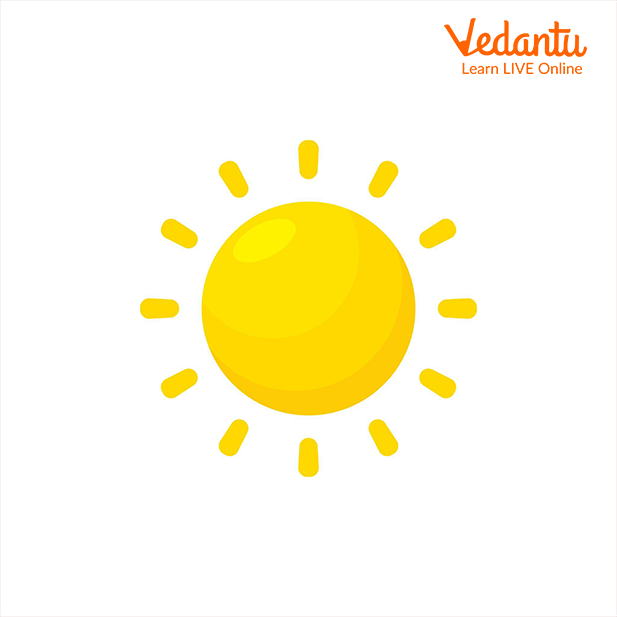
The Sun
Mercury: It is close to the Sun and it has no atmosphere. It contains rough terrain with big holes known as craters. These craters were formed when fast-moving objects from space collided with the Earth.
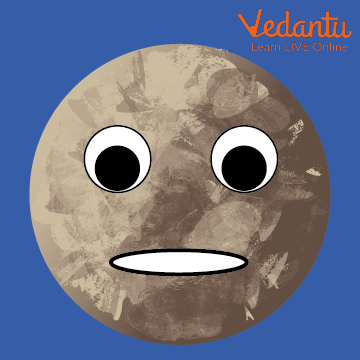
Mercury planet
Venus: It is about the same size as the Earth and has a thicker atmosphere. The Sun's rays warm the planet's surface as they travel through thick dense clouds, but the cloud prevents the heat from leaving, making the planet hot.
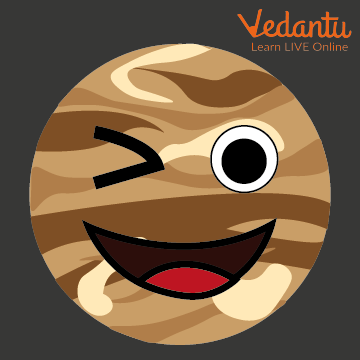
The Venus planet
Earth: The Earth is at the proper distance from the Sun, and it contains the proper quantity of gas mixture that allows life to exist on Earth. Water covers approximately 70% of the Earth's surface, with the remaining 30% made up of land. The Earth has one Moon.

The Earth planet
Mars: Mars is a chilly planet that orbits the Sun as the fourth planet from the Sun. There are two moons. It's a rough planet. Its surface is coated with crimson dust, thus the name "red planet."
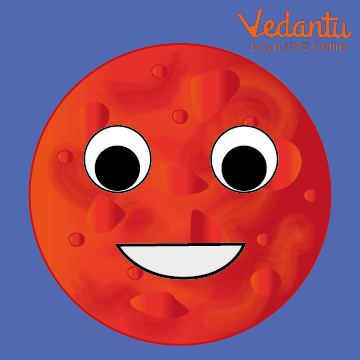
The Mars planet
Jupiter: It is our solar system's largest planet. It is largely formed of gases and lacks a solid surface. There is a massive storm that has been raging for thousands of years, which is why the planet is referred to as stormy. It is surrounded by more than 60 moons.
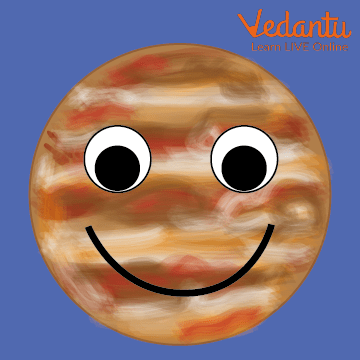
The Jupiter planet
Saturn: It is the solar system's second biggest planet. It's largely made up of gases. It is surrounded by millions of bits of rock and ice. This appears to be a solid ring. It has 62 moons in all.
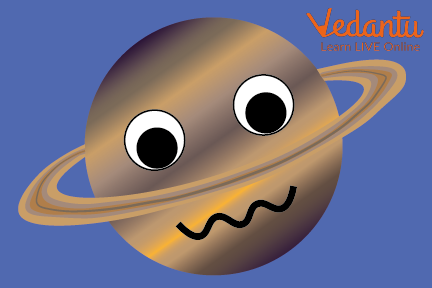
The Saturn planet
Uranus: It is a gas giant that rotates on its side. It is an ice giant because it is a very frigid planet. There are 27 moons in all.
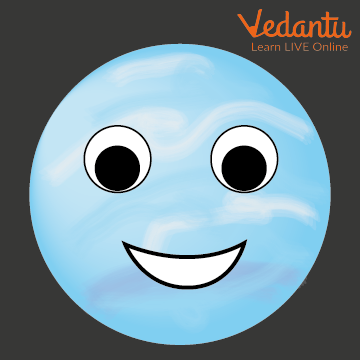
The Uranus planet
Neptune: It is a frigid planet, similar to Uranus. The planet seems blue because of the dark blue swirl of the storm raging on it. It has fourteen moons.
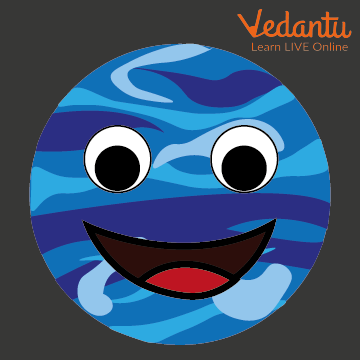
The Neptune planet
Dwarf planet: Pluto was classified as a planet until 2006. Currently, it is categorised as a dwarf planet. It has four moons.
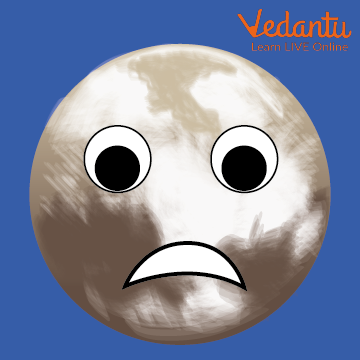
The Pluto planet
Solved Questions
1. What are the different types of the universe?
Ans: Based on the shape, the universe can be classified as 'flat,' 'closed,' or 'open.' These forms are difficult to visualise in terms of the Universe, however, they may be compared to a sheet of paper (flat), a sphere (closed), or a saddle (open).
2. Why is the Sun in the centre of the solar system?
Ans: In the case of our solar system, the majority of the original mass contributed to the formation of the Sun. The mass with the greatest angular momentum stayed in a disc, which then orbited the Sun. The planets, we think, originated from this disc, and hence the sun is naturally situated at the centre of this event.
3. Who was the first to recognise the solar system as a whole?
Ans: Galileo Galilei, an Italian astronomer born in 1564, altered our view of our location in the Universe with his discoveries of our solar system and the Milky Way. Galileo's studies of the Moon, Venus's phases, moons surrounding Jupiter, sunspots, and the discovery that the Milky Way Galaxy is made up of apparently uncountable individual stars prompted the development of modern astronomy.
Fun Facts
There are more stars present in the universe than there are grains of sand combining all the beaches on Earth. That's more than a billion trillion!
The cosmos, which is another name for the Universe, has no centre and is continually expanding (becoming larger) every second, making reaching the edge impossible.
Summary
In this article, we have studied “what is the universe”, the nature of the universe and the solar system. Our solar system's centre point is the Sun. There are eight planets in our solar system and one dwarf planet named Pluto. Pluto is not considered a planet because it does not fulfil the definition of a planet according to the International Astronomical Union.
Learning By Doing
Look at the sky in the morning or evening in the west direction, you will see the shiniest star. Can you tell me the name of it?
FAQs on The Universe Explained: Key Physics Concepts & Insights
1. What is the universe and what are its main components?
The universe is everything that exists, including all space, time, matter, and energy. Its primary components are galaxies, which are vast collections of stars, gas, and dust. These galaxies contain solar systems, stars, planets, moons, asteroids, and comets. The universe also consists of dark matter and dark energy, which cannot be seen directly but are essential to its structure and expansion.
2. How was the universe formed according to the Big Bang Theory?
The Big Bang Theory is the leading scientific explanation for the origin of the universe. It states that the universe began approximately 13.8 billion years ago from an extremely hot, dense point called a singularity. This point rapidly expanded and cooled, allowing for the formation of matter, such as protons and electrons. Over billions of years, gravity pulled this matter together to form the first stars and galaxies.
3. What is the relationship between our solar system, the Milky Way galaxy, and the universe?
These cosmic structures are nested within each other. Our solar system, which includes the Sun and the planets orbiting it (like Earth), is just one of many star systems located within the Milky Way galaxy. The Milky Way itself is a massive spiral galaxy containing billions of stars. In turn, the Milky Way is just one of billions of galaxies that exist within the vast, ever-expanding universe.
4. Why is the Sun considered the centre of our solar system?
The Sun is at the centre of our solar system due to its immense mass and the powerful gravitational force it creates. When the solar system formed from a cloud of gas and dust about 4.6 billion years ago, most of this material collapsed to the centre to form the Sun. Its gravity is so strong that it holds all the planets, dwarf planets, asteroids, and comets in continuous orbit around it.
5. What are the key differences between inner planets like Earth and outer planets like Jupiter?
The planets in our solar system are divided into two main groups based on their composition and location:
- Inner Planets (Terrestrial): This group includes Mercury, Venus, Earth, and Mars. They are smaller, composed of rock and metal, and have solid surfaces. They are located closer to the Sun and have very few or no moons.
- Outer Planets (Gas/Ice Giants): This group includes Jupiter, Saturn, Uranus, and Neptune. They are much larger, composed mainly of gases (like hydrogen and helium) and ice, and lack a solid surface. They are located farther from the Sun and typically have extensive ring systems and numerous moons.
6. What makes Earth a unique planet capable of supporting life?
Earth's ability to support life is due to a rare combination of factors. Its distance from the Sun places it in the "habitable zone," where temperatures allow liquid water to exist on its surface, which is essential for life. It also has a protective atmosphere that shields it from harmful solar radiation, regulates temperature, and contains vital gases like oxygen.
7. How do scientists estimate the age of the universe and Earth?
Scientists use different methods to determine these ages.
- For the Universe: They measure the rate of its expansion (using Hubble's Law) and work backward to calculate when it began. They also analyse the light from the oldest known stars. These methods consistently point to an age of about 13.8 billion years.
- For the Earth: They use a technique called radiometric dating on the oldest rocks and meteorites. This method measures the decay of radioactive isotopes to precisely determine the material's age, which is estimated to be around 4.6 billion years.
8. Besides planets and stars, what other celestial bodies are part of our solar system?
Our solar system is home to a variety of celestial bodies in addition to the Sun and the eight major planets. These include:
- Dwarf Planets: Bodies like Pluto, which orbit the Sun but have not cleared their orbital path of other debris.
- Moons (Natural Satellites): Objects that orbit planets, such as Earth's Moon.
- Asteroids: Small, rocky objects that mainly orbit the Sun in the asteroid belt between Mars and Jupiter.
- Comets: Icy bodies that develop a glowing tail of gas and dust as they approach the Sun.
9. If the universe is constantly expanding, what is it expanding into?
This is a challenging concept because the universe is not expanding into an empty space that already exists. Instead, the fabric of space-time itself is stretching. Imagine dots on the surface of a balloon; as you inflate it, the dots move apart not by travelling across the surface, but because the surface itself is expanding. Similarly, galaxies are moving apart because the space between them is growing. Therefore, the universe isn't expanding "into" anything; it is the totality of space itself that is expanding.
10. Why is Pluto no longer classified as a major planet in our solar system?
In 2006, the International Astronomical Union (IAU) defined a planet as a celestial body that must meet three criteria: it must orbit the Sun, be massive enough to be nearly round, and have "cleared its neighbourhood" of other objects. Pluto meets the first two criteria but fails the third because its orbit overlaps with many other objects in the Kuiper Belt. For this reason, it was reclassified as a dwarf planet.























